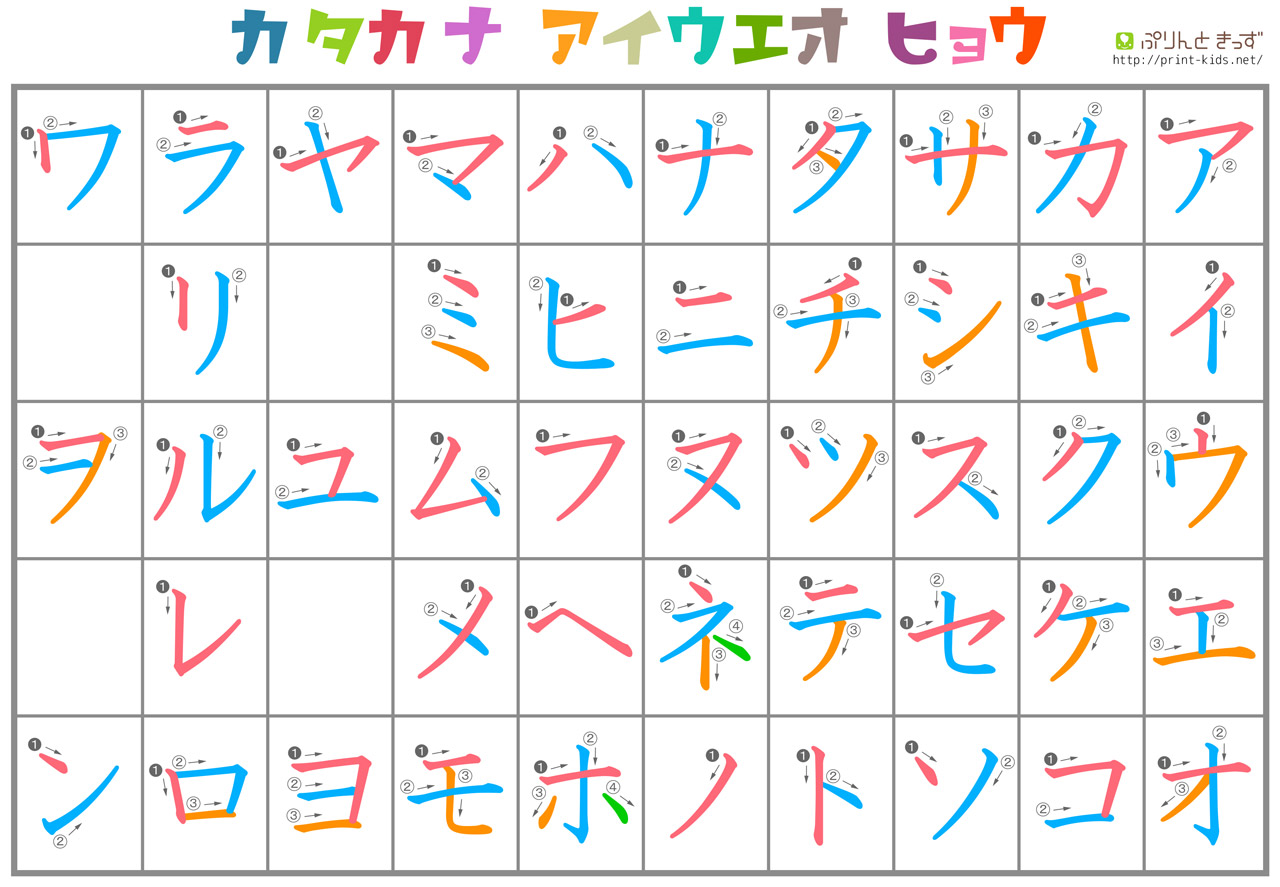

And when you feel you can reproduce a kanji, write compounds in which it appears and which you want to learn. At the same time, you will be building your vocabulary. This will help to fix the character in your mind, for easier recollection later when writing or thinking. With each character, try to write a word consciously and deliberately, being aware of both its reading and meaning, as you do when writing in your own language.
#Kana writing practice download
There, using the identification numbers, you can look up information including the meanings of the kanji and compounds, and conversely you can go from the book to the corresponding writing practice sheets.Īnd if you should need more space for writing practice, you can download from the Internet forms for Japanese manuscript paper (原稿用紙 genkō yōshi).īefore beginning to write a character, take a look at its structure and components, and take note of its meaning(s). This will help you better understand what you are writing and why it is written as it is. The 300 kanji appear in the same order and with the same numbering as in the book Japanese Kanji and Kana.

Small numbers at the beginning of each stroke give the sequence and direction in which to write the strokes of each kana and kanji. To convey a feeling for the size and proportions of the characters, they are presented twice in gray as templates for tracing over, first in large squares, and below in small squares. The over 50 small squares provide enough space to write not just the head characters but also the compounds that are shown in the header. The file “Kanji 1-300” lists the first 300 kanji in the book Japanese Kanji and Kana. Presented with each kanji are its officially recognized readings and up to five multi-kanji compound words that include that kanji. The file “Kana” includes the 46 basic characters each of the two kana syllabaries, hiragana and katakana, arranged in the Japanese alphabetical order a-i-u-e-o. On the last pages are combinations of these characters that are used for denoting additional syllables. The files can be downloaded and printed out for free. They can be used to practice writing of the kana and the first 300 kanji in the book Japanese Kanji and Kana (Tuttle, third edition 2011) by Hadamitzky and Spahn. The っ (tsu) represents this slight pause.ĬHŌONPU (rarely used in Hiragana) appears as a ー (a long dash shape) indicates the use of a long vowel sound in the preceding character.The files “Kana” and “Kanji 1-300” consist of 50 and 150 pages, respectively, in DIN A4 size, with forms for writing exercises. For example, in the word ‘Yukkuri’ (ゆっくり), the word is pronounced ‘yu’ (a slight pause ) ‘kuri’. This small tsu means that the consonant in the next character is ‘doubled’, and a slight pause results. SOKUON is a small tsu (っ or ッ in either Hiragana or Katakana respectively). For example kyō ( meaning “today”) is written きょう with the smaller ‘yo’ and kiyō, (meaning “skillful”), which is written きよう has a full-sized ‘yo’. YŌON uses smaller than usual versions of one of the three ‘y’ kana, ya, yu or yo to make a contracted word. Then we have HANDAKUTEN which is little circle which appears above the 'h' set and this transforms changes ‘h’ to ‘p’. Japanese Kanji Characters Practice Workbook - Genkouyoushi paper - Handwriting notebook for Kanji and Kana Scripts (Hiragana and Katakana) for. 'Modified' is catch all term which you can use while starting to learn Japanese but you should learn the proper names and their functions.įirst we have DAKUTEN which are the two small strokes that change the sound of some Hiragana characters.įor example: The ‘k’ sound becomes a ‘g’ sound ( example: ka か becomes ga が ) A lot of Hiragana symbols resemble Katakana symbols so you are already on your way to mastering that too. Hiragana and Katakana each consist of 46 basic characters which can be modified slightly to cover every syllable you need. Our Hiragana Chart is split into two: Basic and Modified Hiragana


 0 kommentar(er)
0 kommentar(er)
